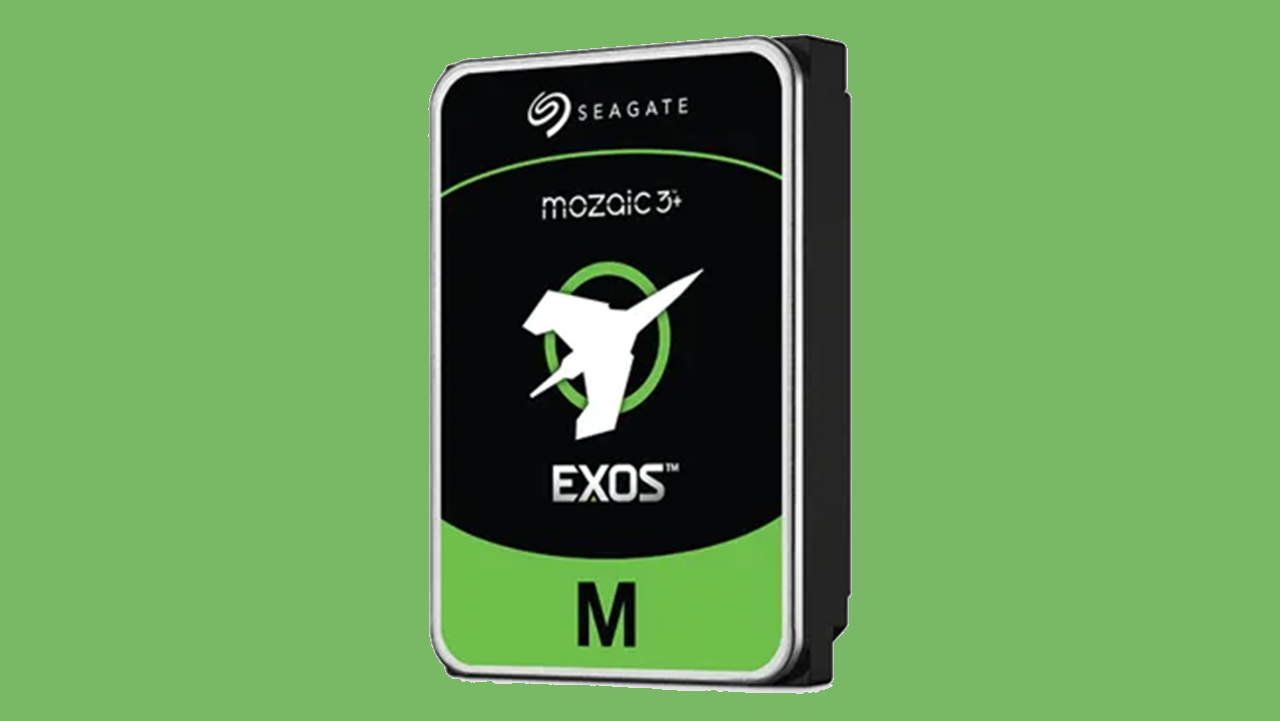Seagate’s biggest-ever hard drive is finally here, coming with 32TB of capacity courtesy of the company’s new HAMR technology (viaExpreview).
It has almost been a year since Seagate said it had finally madea hard drive based on heat-assisted magnetic recording(HAMR) technology using its new Mozaic 3+ platform. A HAMR HDD has long been anticipated since Seagate started experimenting with the technology in 2007. For over a decade, Seagate has predicted HAMR-based drives would be released within years, but these predictions fell apart year after year until now.

Exos drives based on Mozaic 3+ were initially released to select customers in small quantities, but now the general release is (nearly) here,thanks to mass production. Coinciding with this, Seagate silently publishedthe product pagefor its Exos M HDDs, which includes a 32TB model using the shingled magnetic recording (SMR) storage format and a 30TB model using conventional magnetic recording (CMR).
There seems to be a little confusion at Seagate whether its HDD is the Exos M or Exos M 3+. The product page simply calls it the Exos M anda videopublished by Seagate’s official YouTube channel also says Exos M, but the URL says “exos-m-3-plus,” and the video title mentions the Exos M 3+. We’ve reached out to Seagate to clarify the naming situation.

Unlike the first Mozaic 3+ HDDs, Exos M drives are compatible with existing computers, which is pretty important to achieve mass adoption. Requiring new hardware to use the new HAMR hard drives would obviously be a significant obstacle and downside to upgrading. Whether that means Exos M is substantially different under the hood from the original Mozaic 3+ drives is unclear at the moment, though; the product page doesn’t offer very many details in that regard.
Seagate’s main competition in high-capacity HDDs at the moment isWestern Digital, whichlaunched ePMR-based drives in October, whichincluded a 32TB model. Technically, Seagate released its 32TB HAMR drive first, but WD seems to have been the first to a general release. Either way, the two companies are about neck-and-neck in the capacity race, but Seagate might have the upper hand for future releases thanks to HAMR.
Get Tom’s Hardware’s best news and in-depth reviews, straight to your inbox.
Matthew Connatser is a freelancing writer for Tom’s Hardware US. He writes articles about CPUs, GPUs, SSDs, and computers in general.